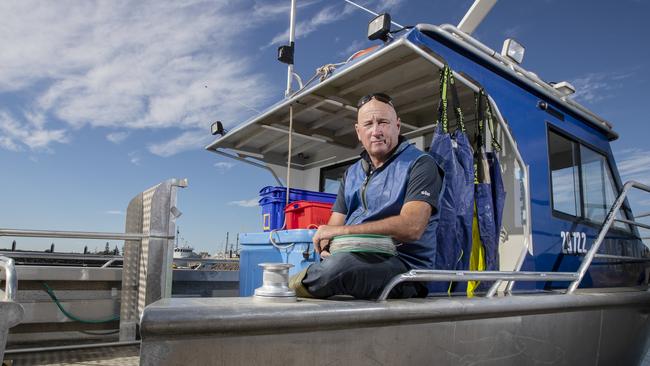Stink over snapper fishing ban
Aussie red snapper could be off the table this Christmas as a result of a proposed three-year ban in SA.

The traditional Aussie red snapper could be off the table this Christmas — or cost a small fortune — as a result of a proposed three-year ban on all snapper fishing in South Australia.
With Queensland and Western Australia also considering restrictions or bans on snapper fishing to replenish stocks, the SA government will today announce drastic action to protect the fish, proposing a complete ban on both commercial and recreational snapper fishing until 2023.
The radical step follows what SA scientists regard as an alarming collapse in snapper numbers over the past five years, down 23 per cent in the Spencer Gulf and a whopping 87 per cent in Gulf St Vincent, between Adelaide’s metropolitan coastline and the Yorke Peninsula.
However, the fishing industry’s peak body has questioned the methodology used, vowing to fight the ban, which it says will send many commercial fishing businesses broke.
Any ban would also have an immediate effect on the availability and price of Australian fish, forcing suppliers to stock NZ snapper instead.
SA Primary Industries Minister Tim Whetstone told The Australian yesterday that two options were under consideration — a three-year statewide snapper closure from this October to March 2023, or a three-year closure on the West Coast, Spencer Gulf and Gulf St Vincent, with a limited season between March and September only in the state’s southeast.
The Australian understands that the first and most drastic option is the preferred one.
“As this species is long-lived and slow-growing, if we do not make the right decision now there will be ramifications for years to come,” Mr Whetstone said.
“There is a real possibility that our grandchildren won’t be able to catch a snapper in South Australian gulfs.”
Such a ban would have immediate and dramatic efforts on snapper supplies in SA. The report prepared by Primary Industries and Regions SA notes that WA and Queensland are grappling with similar issues and are considering bans.
“This science backs up anecdotal evidence from fishers who have reported snapper have been harder and harder to find for years in traditional fishing grounds,” Mr Whetstone said.
The minister’s claims and the research he is relying on were strongly questioned yesterday by the president of Wild Catch Fishing SA, Dennis Holder, who is also a board member of the peak industry group, Seafood Industry Australia.
Mr Holder questioned the margins for error in the report prepared by Primary Industries and Regions SA and said the department was measuring current fish stocks against a record take in the early 2010s.
“We are in a period of drop-off, we are not in a period of collapse,” he said. “The minister is a nice guy but he is greener than grass and as a new minister he has come in and the department has found his measure.”
Mr Holder predicted a bleak future for the snapper industry if the ban was implemented.
“You will break most of them,” he said. “Our charter industry will totally collapse.”
A spokeswoman for the Sydney Fish Markets said the market had only stocked NSW and NZ snapper for several years, in part because of pressures on stocks in the eastern states. However, any ban in SA — especially if mirrored in Queensland and WA — would push up prices and limit, if not end, availability for the Australian species of the fish.
Earlier this year Wallaroo fisherman Craig Fletcher said he would be selling his boat because of a lack of snapper in the area.
He also questioned the science on which the report to the SA government was based, saying the impact of recreational fishing was unknown.




To join the conversation, please log in. Don't have an account? Register
Join the conversation, you are commenting as Logout